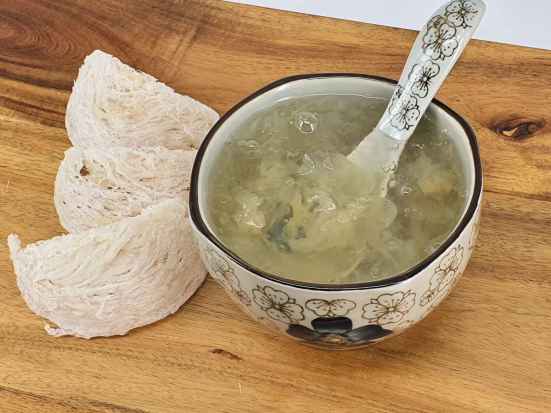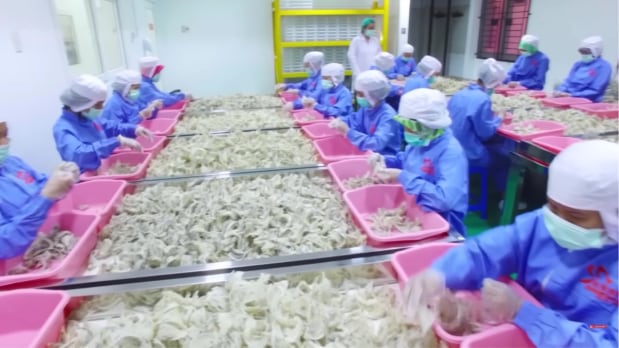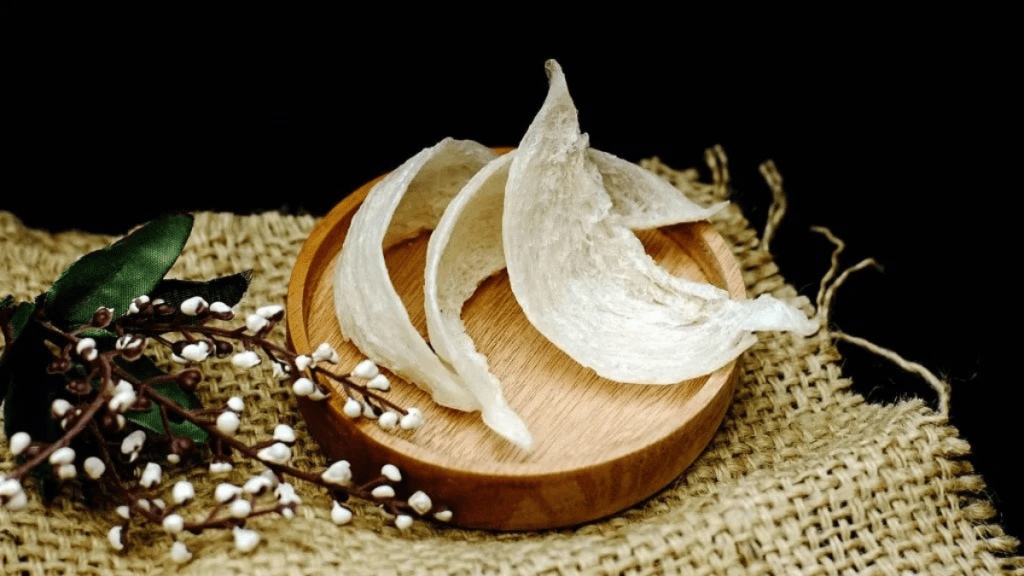In an unassuming structure somewhere in Southeast Asia, hundreds of swiftlets flap through narrow slits in concrete walls. Inside, there’s no furniture, just beams and planks coated in sticky, glistening white cups. These are nests, not of twigs or leaves, but of bird saliva. And they’re worth more per gram than gold (well, not really, but you get it).
Composed almost entirely of the solidified saliva of swiftlets, these delicate, gelatinous structures are today at the heart of a booming global industry valued at $8.45 billion in 2025, projected to reach $16.16 billion by 2033 with an expected CAGR of 8.43%, according to Business Research Insights. Once a rarefied delicacy of imperial China, edible bird’s nests have now become one of the world’s most expensive animal-based foods. Global demand for bird’s nests—gelatinous, protein-rich delicacies made from the saliva of swiftlets—is growing fast, particularly in China, where they’re seen as a functional superfood with benefits ranging from better skin to stronger lungs.

Edible bird’s nests are enjoyed in a variety of forms, blending tradition with modern culinary trends. The most classic preparation is bird’s nest soup, typically simmered with rock sugar into a sweet, gelatinous tonic and sometimes enriched with ingredients like red dates, lotus seeds, or goji berries for added health benefits. In savoury versions, it may be added to chicken broth or congee. Today, the delicacy has expanded far beyond the bowl: ready-to-drink bottled tonics, bird’s nest jellies, and infused desserts like puddings and ice creams are increasingly popular, especially among younger consumers. In the wellness and beauty space, bird’s nests are even found in capsule supplements, facial masks, and skincare products, capitalising on their perceived benefits for skin health, hydration, and immunity. But unlike rice or coffee, bird’s nests can’t be scaled with traditional industrial methods.
The nests are harvested either from purpose-built “swiftlet houses” or caves, requiring precise environmental control, careful harvesting to avoid disrupting bird populations. After collection, the nests undergo cleaning, drying, and sorting, often by hand, to remove feathers and impurities before being graded and packaged for sale. The result is a product that sells for as much as $9,500 per kilogram, which in INR comes up to Rs 8 lakh.
Saliva gold rush
Until recently, most of the edible bird’s nest trade was dominated by Malaysia, Indonesia, and Thailand, with other nations—including Vietnam, the Philippines, and even Australia—gradually increasing production capacity. What catalysed this shift across the region was regulation, particularly bilateral export agreements with China, the world’s largest market for bird’s nests. Under these protocols, only nests meeting stringent food safety and traceability requirements can be sold in China. This has forced producers to standardise operations across the supply chain—from the swiftlet houses to the processors and exporters.
In response, several countries have started building “standardised raw material zones,” with traceable, geographically defined swiftlet farms to ensure quality and compliance. The result: cleaner, higher-quality nests that command higher prices in China, North America, and even Europe. According to data from Research and Markets, countries like Vietnam and Indonesia are leading in exports, while other regions are exploring new investments to tap into this high-value sector.

For now, the United States remains one of the largest importers of bird’s nests, driven by demand from the Asian diaspora and a booming wellness industry. But China remains the dominant consumer, accounting for over 90% of global consumption.
Bird’s nests aren’t just about taste—they’re about aspiration. In traditional Chinese medicine, they’ve long been touted as tonics for longevity, skin health, and immunity. But their popularity has grown beyond heritage. Today’s consumers, especially women in their 20s and 30s, consume bird’s nests in bottled drinks, infused tonics, and even facial masks.
This shift from medicinal soup to Instagrammable beauty elixir has transformed the economics of bird’s nests. As product formats diversified, companies across Asia have begun adopting hybrid processing models that combine traditional methods with export-grade hygiene standards. In effect, countries are no longer just exporting food—they’re exporting cultural luxury.
Why isn’t India tapping?
Interestingly, while India has native swiftlets nesting along parts of its Andaman and Nicobar coasts, its edible bird’s nest industry remains largely untapped. Legal ambiguity around wildlife protection laws—specifically the Wildlife Protection Act, 1972—combined with limited awareness and lack of policy clarity, has kept India on the sidelines. Harvesting nests from wild swiftlets is often restricted, and even farming practices face bureaucratic and legal hurdles.

India isn’t alone. The edible bird’s nest trade is illegal or heavily restricted in several countries due to conservation concerns. Swiftlets are often protected under wildlife laws, and harvesting their nests, particularly from caves, can disrupt ecosystems and violate conservation regulations. Even in countries where farming is allowed, producers face strict environmental and hygiene standards.
Industry experts argue that with the right policy framework and investment in ethical farming infrastructure, India and other underrepresented nations could become contenders in this lucrative export market.
Pricey, precious—and problematic?
While demand has grown steadily, the supply side faces challenges. The most ethical harvesting method, waiting until fledglings leave the nest, allows only one or two harvests a year and often yields nests with more contaminants. The most profitable method, harvesting before egg-laying, risks exhausting the swiftlets and disrupting reproduction cycles.
This ecological trade-off is increasingly under scrutiny, especially as commercial pressure builds. Conservationists have warned of potential harm to wild swiftlet populations, prompting tighter regulations and growing interest in sustainable farming certifications. In a world increasingly hungry for premium, natural, and health-linked food products, the next billion-dollar boom might just be built, quite literally, on spit.


